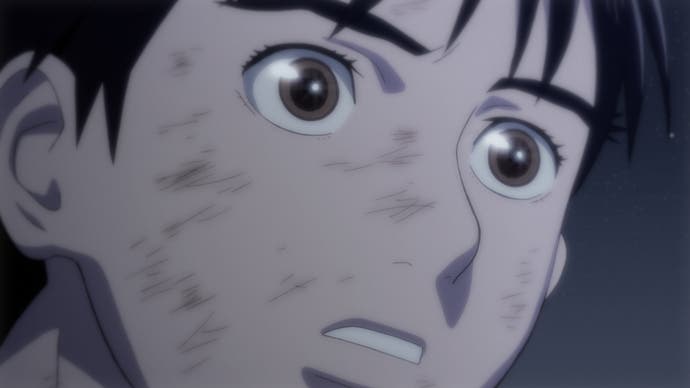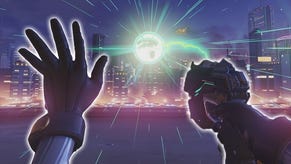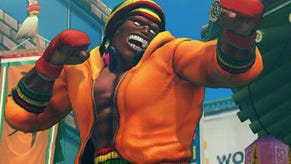Street Fighter IV
Kick, punch, it's all in the mind.
While the orthodox Arcade mode provides the core of the experience - putting your character on a global tour during which they fight six general opponents, then an arch-rival and, finally, the game's boss Seth - Street Fighter IV succeeds in integrating the online and offline experience elegantly. The option to allow other players around the world to challenge you while you're playing through the arcade mode is both ingenious and exquisitely implemented.
It mimics the arcade experience exactly, breaking into the flow of your progression, taking you out to play against a human competitor, allowing you to play rematches against them and finally, when you're all done, reinserting you into the single-player game where you left off. Our only criticism of the set-up is the inability to switch the option off mid-game (it has to be turned off on the start screen). It's taken us more than an hour to progress through a single arcade run on occasion, simply because of the sheer number of new challenger interruptions.
Online, there are two ways to play: Player matches and Ranked matches. The former's just for fun and practice, while the latter employs a Battle Point system that rewards wins with BP points and punishes losses by subtracting them. The game succeeds in choosing opponents of a similar skill level, something that will only improve as the global community settles into a natural hierarchy. Accessing both Player and Ranked matches can be a hit-and-miss affair - we've found searching for Custom matches yields better results than a blind search. But once in battle, the netcode, even against Japanese players on the other side of the world, is flawless. In well over 200 online matches, only one has suffered any sort of lag.
The final chunk of the game rests in the sprawling Challenge Mode, which offers a multitude of Time Attack, Survival, and Trial challenges to work through. Time Attack and Survival modes offer multiple stages to tackle across two difficulty levels, one of which has its own specific leaderboard. The Trial challenges teach you moves and combos of scaling difficulty for each of the game's 25 characters, a useful feature for expanding your competence. These features, which go far beyond the usual beat-'em-up arcade conversion's, offer challenges of varied colour and nuance and reveal Capcom's keen understanding of the need to provide the player with multiple and ongoing challenges, deep into the game.

Key to this are the 'titles' and 'icons' rewarded for certain achievements throughout the game. You can assign your profile one unlocked title - a graphically illustrated phrase such as Fledging Fighter, King of the Hill or Retiree that describes your character - and one pictorial icon. These customisations can be used to intimidate (or mislead) opponents online but, with 432 titles and 260 icons to be collected, all unlocked by meeting various criteria in both online and offline modes, you gotta catch ‘em all.
In addition, medals are awarded for online play: one earned every time you perfect an opponent, or beat one using chip damage, or finish with an ultra combo, for example. These medals have no greater purpose than to act as a kind of dog-tag collectible, reminding you of past victories. Capcom has fully understood the need to reward players for spending time in their game, and the sheer volume of collectibles is dizzying.
Street Fighter IV's niggles are few, and overwhelmed by its many triumphs. There is some disappointment with the four new characters, none of whom seem to quite fit the classic Street Fighter aesthetic (Crimson Viper in particular looks like she's just stepped out of an SNK game). Seth, the game's Dr Manhattan-esque final boss, is a particularly cheap and sorry bastard whose near-unblockable (but weak) Ultra move will no doubt cause many tantrums above the easiest difficulty. We found being forced back to the character select screen after a continue an unnecessary irritation, adding an often superfluous load. And finally, the lack of any spectator slots online, something that may be addressed in a future patch to allow for friends to play winner-stays-on, is a slight oversight.

But after over a month of playing Street Fighter IV almost daily, what has become quite clear is that it manages to appeal to a huge range of abilities and tastes without ever compromising its fidelity. Moreover, what is unusual - astounding, even - is Capcom's care in delivering a conversion that goes far beyond what is normally expected of a console beat-'em-up.
Indeed, the bulk of the package, from the extensive Challenge mode through to the option to select Japanese or English voice acting on a per-character basis, ensures that the console release feels like the definitive version of Street Fighter IV. Even discounting the gigantic online superstructure that will make the game a packed competitive arena for years to come, there's enough content offline to inspire weeks and months of play - the kind of investment long-form RPG epics demand, not five-minute gameplay sucker-punches born in the arcade.
The question for Capcom - the looming problem for a company whose game exemplifies its genre more than any other - is only this: where next? There will no doubt be tweaked versions and updates released into arcades and via patches over the next two years, but these will be edits, not rewrites. And while there will no doubt be a small but vociferous core of Third Strike veterans who cry foul over the series' apparent simplification, they will be vastly outnumbered by those players who get to fall in love again with the Street Fighter of their youth: one that's easy to pick up and play, yet near-impossible to master. As a result this is, in almost every way that matters, the perfect Street Fighter.
Or, as my friend at ATEI would put it: dude, this is actually the second coming.















